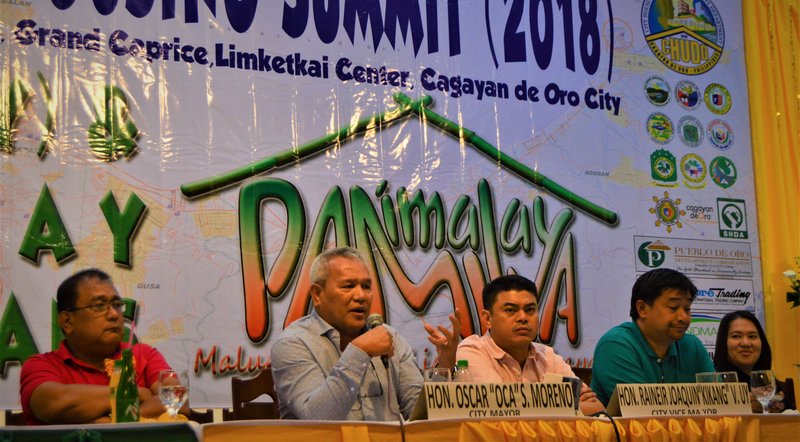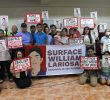
Cagayan de Oro City Mayor Oscar Moreno gives an update on the city’s housing plan for the informal settler families during the 2nd Housing Summit held here recently. (Jigger J. Jerusalem/davaotoday.com)
CAGAYAN DE ORO CITY, Philippines – A growing population for a highly urbanized city such as Cagayan de Oro has remained a challenge for local leaders as they tried to address the housing needs of the city’s informal settlers.
Urban migration and the increase in the number of inhabitants have been the concern of the local government unit of Cagayan de Oro, whose population rose from 602,088 in 2010 to 675,950 in 2015, a 2.2 percent population growth, which is projected to double within a span of 31 years.
The City Housing and Urban Development Department (CHUDD) noted that there were 34,898 informal settlers in 2013, many of them survivors of Typhoon Sendong, but it went up to 51,437 as of August this year, as more residents were compelled to move out of their communities due to demolition and a standing government order to vacate high-risk areas.
The surge in population will also mean an increase of those belonging to the informal settler families (ISFs), said Mayor Oscar Moreno during the second housing summit held here recently.
He said ISFs who were surveyed years ago have now children who are married and became ISFs too.
Most of these ISFs are in barangays Carmen, Lapasan, and Kauswagan living along hazardous parts of the city such as waterways, landslide-prone areas, and no-build zones.
Providing decent shelters to the ISFs has been on the Moreno administration’s agenda as a program for land use and property acquisition for resettlement was put in place.
According to the city’s local shelter plan, about 12,205 households have benefited from the socialized housing program. Beneficiaries are Sendong survivors and those who were recipients of the previous administration’s “piso-piso” program.
But Moreno said funding for these programs has remained the hindrance as the city government admitted some P28.5 billion is needed to provide the housing requirements of these ISFs.
The funding would include land purchase, site development, construction of housing units and other needs of the informal settler families.
Ermin Stan Pimentel, head of CHUDD, said about P250 million was proposed by his office for land acquisition and is approval by the city’s legislature.
Pimentel admitted that providing for the shelter requirements of the ISFs is a “very expensive program” adding that a partnership with land developers will help the city government realize its goal.
The local shelter plan of Cagayan de Oro notes that the city needs at least 350,000 hectares of land to cope with the rising number of ISFs.
Pimentel said real estate developers have taken interest in helping the city government in the development of ISF housing subdivisions.
At present, the city has bought more than 13 hectares of land, with additional 39 hectares up for acquisition and another 37 hectares for survey.
Among the sites identified as development areas for the ISF are in barangays Bugo, Balubal (east urban), Indahag (eastern uptown), Poblacion (downtown), Lumbia (west uptown), and Bulua and Iponan (western urban). (davaotoday.com)










